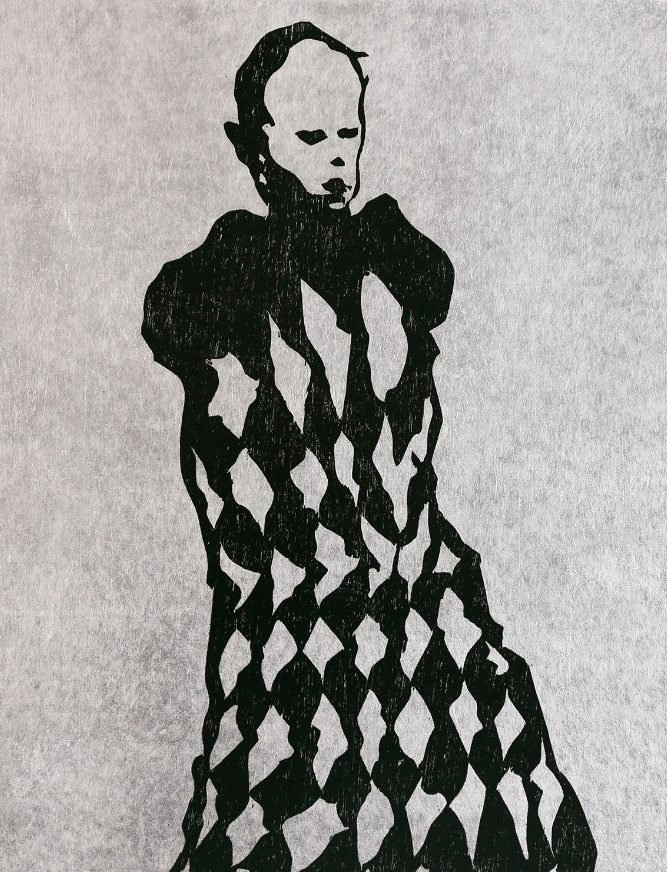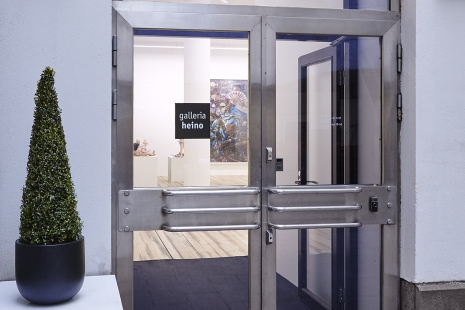He makes us experience the power of image reading; he manages to say a lot in just a few strokes or a silhouette. It is enigmatic, melancholic and in some cases tragic. The artist’s figures often seem to be inhibited, clumsy or incapable of moving on their own two feet to communicate. Tanttu typically makes use of wheels, carts or crutches as a means of transport. There is a dynamic mix of dark and light, weightiness and weightlessness, of abstract and figurative. Besides stripped-down dark silhouettes, faces, trees, roots and mirror effects also recur in Tanttu’s images. The face of a young man looms amidst a collection of roots. Or is he pulling himself away? Everything shows growth, perhaps it’s a growing that hurts. A silhouette is depicted as a demure diva against a silvery background. Despite the fame, it all seems lonely and a little sad to always end up playing the diva. Likewise the child king: a distant figure in cold blue, with dark eyes who suddenly appears like a figure from the past. A lonely and cherished child or a memory from something that must be relinquished, slowly fading away. Tanttu seems to question what real memory is, and how we constantly end up conceding and transforming into something else. He has a sympathetic look and manages to capture the different essence of loneliness.
Tanttu also does video works, photographs and paintings. This exhibition features a black and white animation. It was a slow process with as many as 10,000 drawings made by the artist with chalk on a blackboard. The artist has taken cognisance of collective feelings of fear. The work ”Noli Timere”, which means ”be not afraid” expresses something about courage: the courage to both live and die. Unlike today’s hectic digital arena of images, this calm, abstracted flow of symbols is something pleasant to behold. Death is a challenging subject to portray, but Tanttu succeeds in depicting a world of its own, which nevertheless reaches out to us others. Therein lies the strength of his images; he brings forth truths that we recognise but which we are often incapable of expressing ourselves. In his introspective, timeless, dreamlike language, Tanttu provides no simple answers but instead raises relevant questions.
Antti Tanttu (b. 1963) has a 35-year career behind him, is one of Finland’s foremost graphic artists and has also been a professor of the subject at the Academy of Fine Arts. His public works can be seen in Viikki Church and Kaitaa metro station for example. His wood cutting technique touches on the interface of graphics and painting. Tanttu glues Japanese paper onto MDF boards, onto which he also affixes metal so as to create a certain mirroring effect. It is very artisanal and meditative work. He then prints large, abstract woodprints over the surface. In some cases, the artist chooses to bring out the grain of the wood in the woodcuts so each specimen is unique. Everything is based on incessant drawing. Images that he returns to and everything seems to be more or less connected. Tanttu is something of an observer, but much also revolves around his own feelings and the big questions in life. It’s a matter of processes that feed the subconscious.
Camilla Granbacka
Critic, curator, art historian





